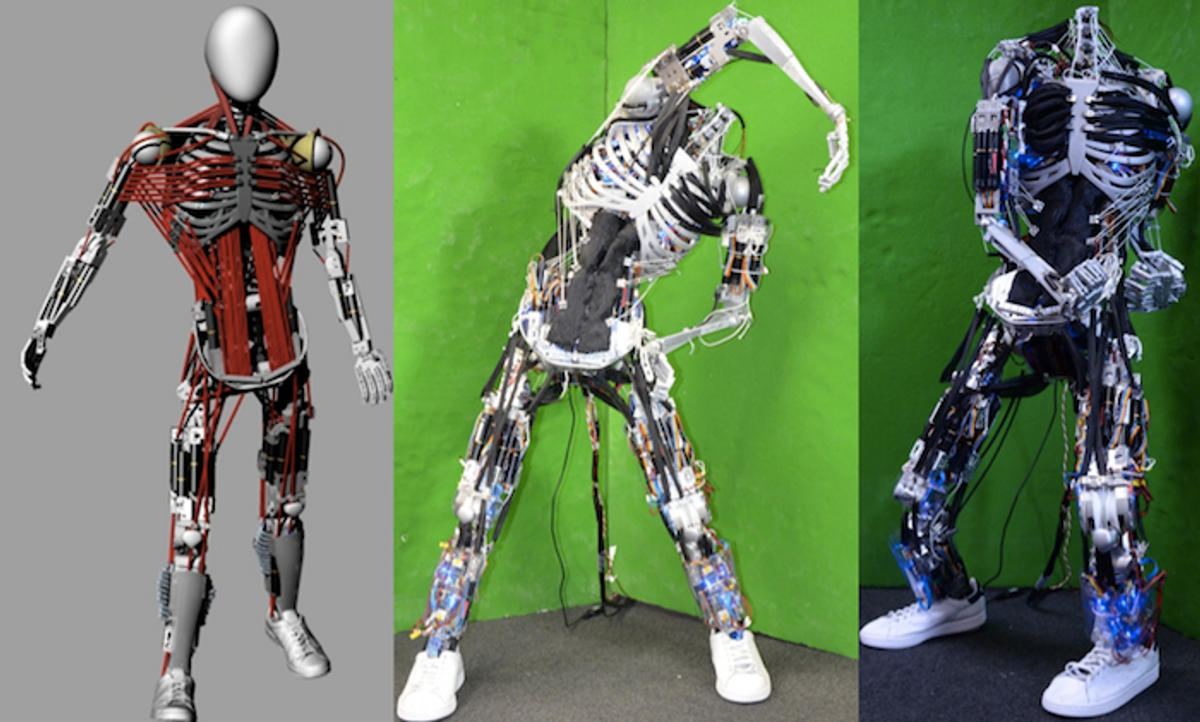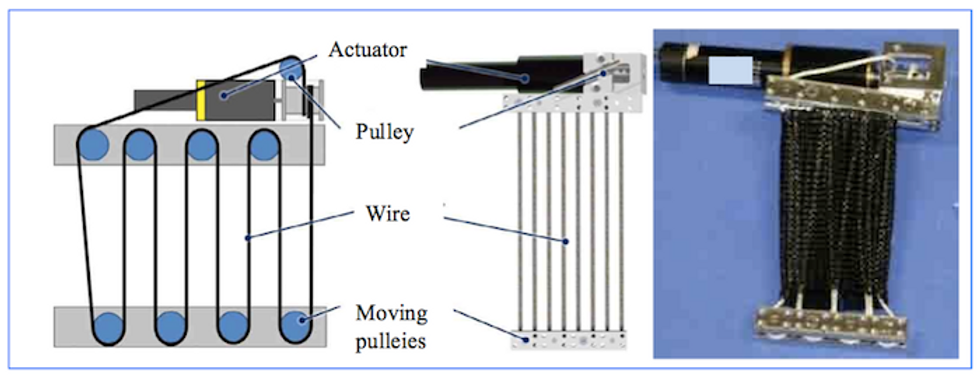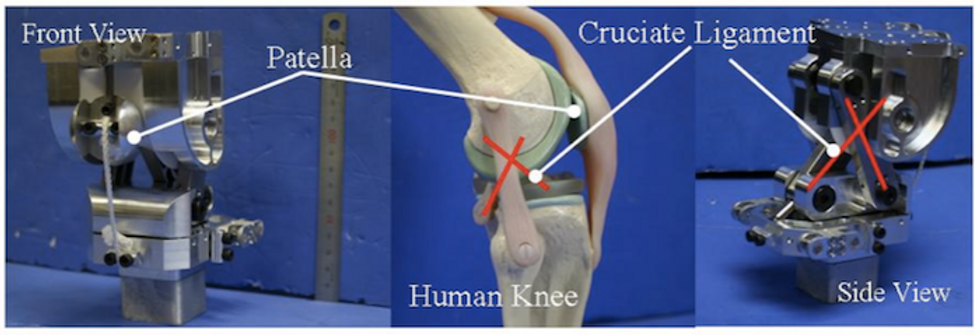We’ve seen bio-inspired hummingbird robots, turtle robots, squirrel robots and more… enough to start an extremely profitable robot zoo. But very few researchers have been able to mimic the human body down to muscles and bones.
Researchers at the University of Tokyo are taking bio-inspired robots to new heights with Kenshiro, their new human-like musculoskeletal robot revealed at the Humanoids conference this month. They have added more muscles and more motors to their Kojiro robot from 2010, making Kenshiro’s underlying structure the closest to a human's form so far. See the new body in the picture above.
Kenshiro mimics the body of the average Japanese 12-year-old male, standing at 158 centimeters tall and weighing 50 kilograms. Kenshiro’s body mirrors almost all the major muscles in a human, with 160 pulley-like "muscles"—50 in the legs, 76 in the trunk, 12 in the shoulder, and 22 in the neck. It has the most muscles of any other bio-inspired humanoid out there.
Check out the video: a headless and armless Kenshiro does squats, looking uncanny enough to give you the shivers.
Who are you calling fat?
Why try and mimic the human body? It turns out that getting a robot’s weight right is a tricky problem. Yuto Nakanishi, the head of the project, spoke about the weight problems of Kenzoh, Kenshiro's tendon-driven upper-body robot ancestor. Kenzoh was a hearty 45 kg, just for the upper body. Scaling up, they projected that a full-body Kenzoh could weigh as much as 100kg!
That was a lot of weight for a relatively small robot. So they decided to design a robot with the same weight ratios of a human. For example, a 55 kg boy would have about a 5 kg thigh and 2.5 kg calf. Kenshiro copies that ratio, with a 4 kg thigh and 2.76 kg calf. Balance is key.
Weight was one thing, but the researchers also tried to mimic the muscle torque and joint speeds. Kenshiro’s total power output is 5 times greater than Kojiro’s, allowing it to do things like the gymnastics-like leg lift in the video above. Kenshiro can get almost the same amount of joint torque as a human, with joint angular speed not quite at human level, at 70-100 degrees per second. It’s a trade-off in weight and power: bigger and stronger motors are often heavier.
Muscles and bones
Like Kojiro, Kenshiro is actuated by a system of pulley-like muscles. This time, instead of single point-to-point muscles, they decided to make planar muscles -- just check out Kenshiro's abs to understand what we mean.
These flat and wide muscles use only one motor and are much more stable. All in all, these motors give Kenshiro 64 degrees of freedom (except for the hands): 13 in the neck, 13 in each arm, 7 in each leg, and 11 in the spine.
Kenshiro's bone structure is also quite the sight. Its aluminum bones, including an impressive rib cage, are sturdier than previous 3D printed bones (breakage tended to be a problem), and its knee-joints include imitations of cruciate ligaments and a floating patella.




